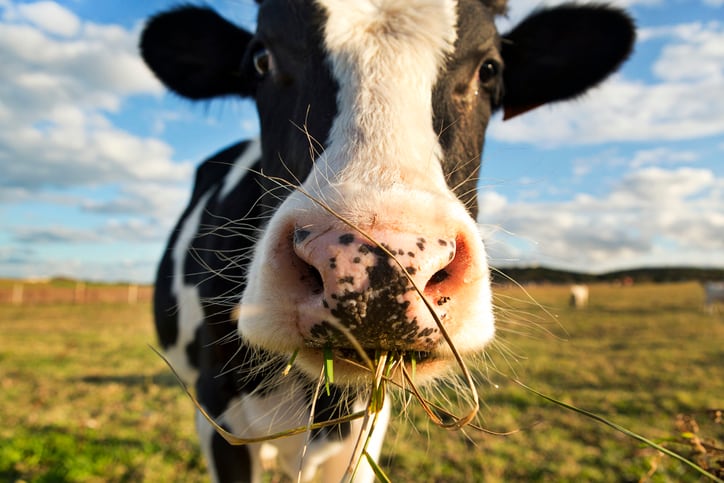Tuberculosis (TB), an infectious disease that infected nearly 11 million people globally in 2023, remains a threat for both animal and human health today.
According to the World Health Organization, around $22bn is needed per year for disease prevention, diagnosis, treatment and care.
Tuberculosis has overtaken COVID-19 as the world’s deadliest infectious disease, causing 1.25 million deaths in 2023.
The US is a major funder of TB research programs. But since becoming president for a second term in January 2025, Donald Trump has pulled the US out of the WHO and has initiated a foreign aid freeze that has impacted TB research among other initiatives.
WHO, too, has had to cut its budget by a fifth as a result of the US exit, as the Organization aims to plug a $600m funding hole.
All this comes at a time when TB cases globally are rising, having been in a decline until 2020 – and experts have warned that complacency in the fight against TB could create drug-resistant superbugs.
TB in numbers
TB mostly affects adults in their most productive years, but all age groups are at risk. Immunocompromised people, such as those living with HIV or diabetes, are at a higher risk of illness.
Over 80% of cases and deaths globally are in low- and middle-income countries. In 2023, the largest number of new TB cases occurred in South-East Asia (45%), followed by Africa (24%) and the Western Pacific (17%). More than two-thirds of the global case total was recorded in Bangladesh, China, Democratic Republic of the Congo, India, Indonesia, Nigeria, Pakistan and the Philippines.
Source: WHO
TB infects animals including beef and dairy cattle, and it’s possible for it to transfer onto humans. For researchers, understanding why and how the infectious disease affects animals and humans alike has long been a priority.
Recently, new research carried out by University College Dublin, University of Edinburgh, and ETH Zurich scholars has shed light on the genetic factors that influence bovine TB susceptibility.
The paper, published in Communications Biology (see ‘sources’ below for more information), has important implications for the human disease too, as the causative agent of TB in cattle (Mycobacterium bovis, or M.bovis) is near-identical at a genomic level to Mycobacterium tuberculosis, the main cause of the disease in humans. And in the Global South, M. bovis infections can directly transmit onto humans.
The impact of bTB spans beyond economic losses
A 2023 survey of 1,600 dairy and beef farm holdings conducted in England and Wales showed that dairy herds tend to experience higher consequential costs than beef herds. Costs per head tend to be higher in beef herds than dairy.
Of those surveyed, around 50% said they had delayed or lost sales of store animals; 26–16% said they had delayed or lost sales of breeding animals, delayed buying-in of replacement breeding animals, lost milk sales, delayed buying-in of store animals for finishing, delayed or lost sales of finished animals. Meanwhile, 30–36% reported delayed or abandoned expansion plans, loss of breeding stock, and reductions in herd size. From 3-12% of respondends said they exited from beef or dairy enterprises as a result of a disease outbreak.
Source:
The consequential costs of bovine tuberculosis (bTB) breakdowns in England and Wales
Andrew P. Barnes, et al.
Preventive Veterinary Medicine, Volume 211, 2023, 105808, ISSN 0167-5877
DOI: 10.1016/j.prevetmed.2022.105808.
The ground-breaking research involved data-intensive computational analysis of genes from M. bovis-infected animals as well as genome sequence data to identify thousands of genomic variations that affect the function and behaviour of cells.
From these thousands of genes, the authors identified 115 directly linked with proneness to bovine TB.
The work also identified variants associated with key interferon-inducible genes that have different magnitudes of effect on gene expression following M. bovis infection.
In addition, the study helped pinpoint gene-selection methods that may help breed cattle that’s able to clear a bTB infection more effectively.
Uniquely, this is the first study that uses the TWAS genetic methodology to evaluate a susceptibility trait for a mycobacterial infection that causes tuberculosis in mammals, the researchers say.
“Overall, the TWAS genes identified here should be prioritised for further downstream functional analysis and the cis-eVariants associated with these genes may be incorporated as prior information in future genome-enabled breeding programmes for bTB disease susceptibility traits,” the authors concluded.
Source:
Integrative genomics sheds light on the immunogenetics of tuberculosis in cattle.
O’Grady, J.F., McHugo, G.P., Ward, J.A. et al
Commun Biol 8, 479 (2025).
DOI: 10.1038/s42003-025-07846-x


